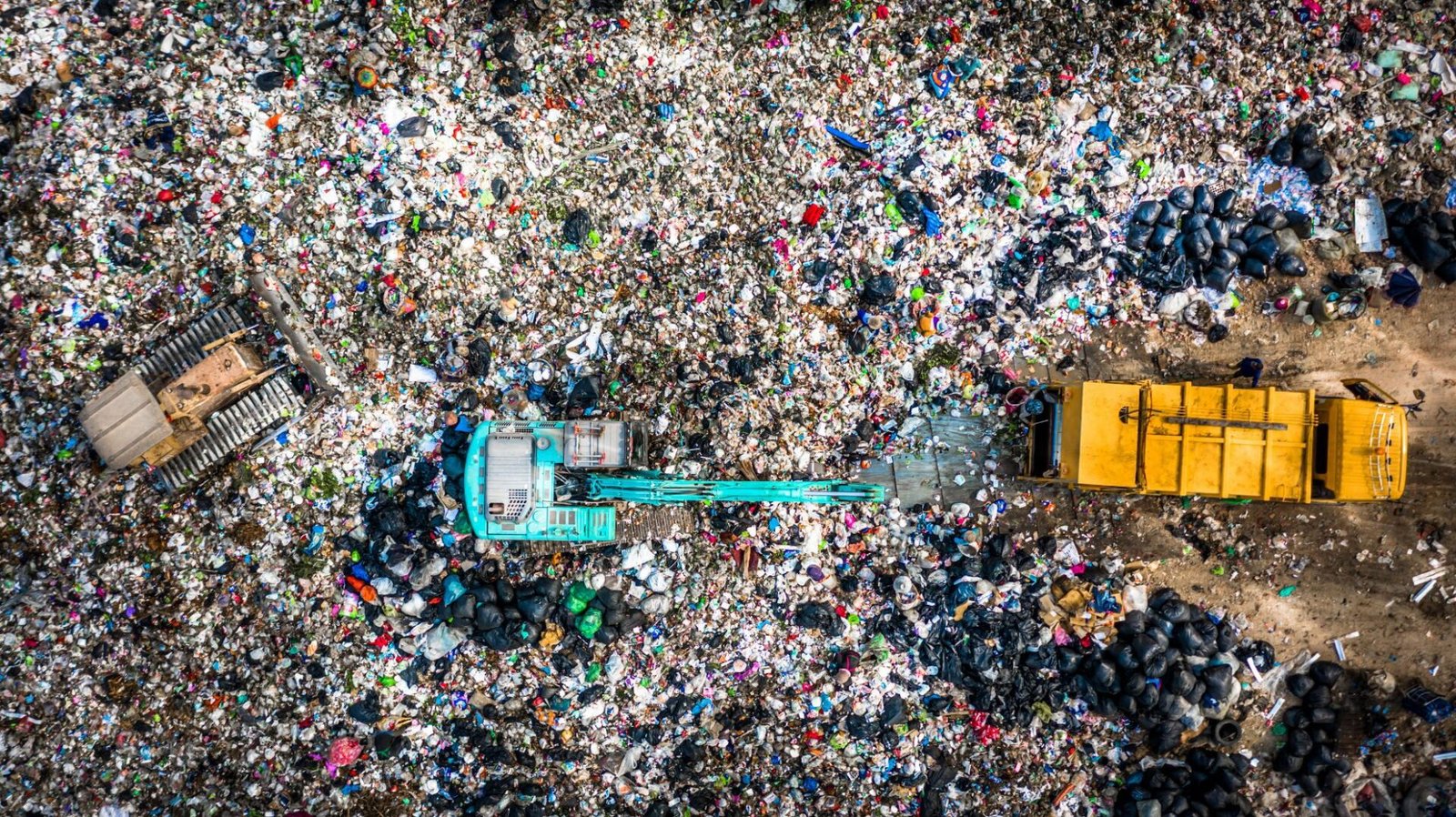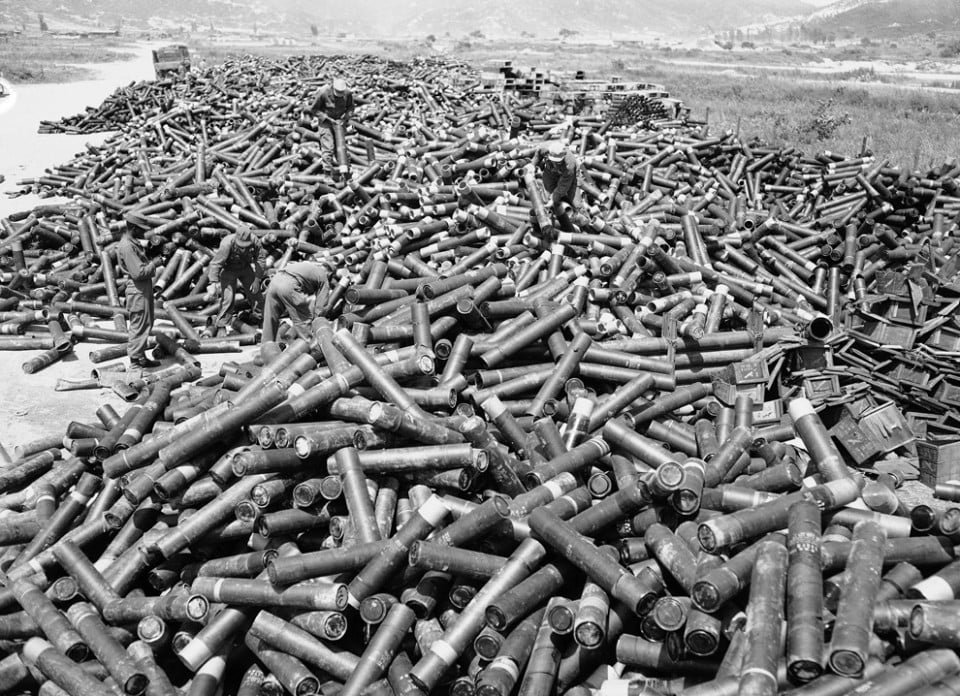Soil Pollution - A Hidden Threat to Civilization
What is Soil Pollution?
Soil pollution is defined as hazardous chemicals (pollutants or contaminants) at sufficient concentrations in the soil to endanger human health and the environment. Soil pollution is described as when the levels of contaminants in soil exceed the levels that should be present naturally, even if the number of contaminants found naturally in the soil is not high enough to pose a threat.
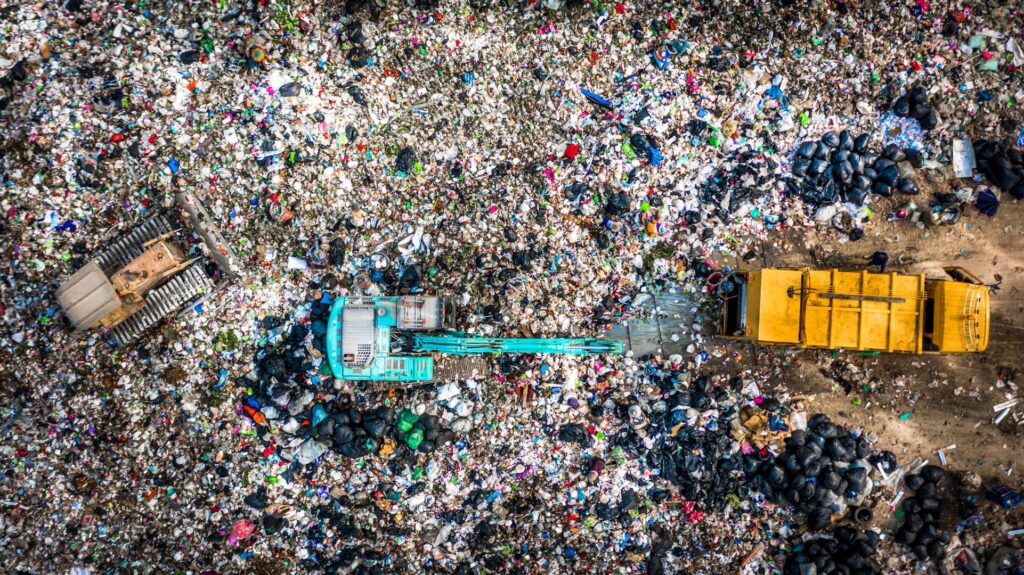
Types of Soil Pollution:
Pollution is caused by pollutants and toxins in the soil. The most prominent pollutants of soil are biological agents and some human activities. Soil contaminants include all products of soil pollutants that contaminate the soil.
Agricultural procedures that infest crops with pesticide chemicals to urban or industrial wastes or radioactive emissions that contaminate the soil with a variety of harmful compounds are all examples of human activities that poison the soil.
▶ Biological Agents:
Biological agents work in the soil to introduce manures and digestible sludge (excreta from humans, birds, and animals) into the soil.
▶ Agricultural Practices:
Pesticides, fertilizers, herbicides, slurry, trash, and manure have all had a significant impact on crop soil.
▶ Radioactive Pollutants:
Radioactive elements such as radium, thorium, uranium, nitrogen, and others can contaminate soil and pose health risks.
▶ Urban Waste:
Urban waste includes garbage and trash, dry sludge, and sewage from residential and business waste.
▶ Industrial Waste:
Steel, pesticides, textiles, prescribed drugs, glass, cement, and rock oil area unit among the products created by paper mills, oil refineries, sugar plants, and different industries.
Examples of Soil Contaminants:
A wide range of contaminants has the potential to contaminate the soil. The following are some of the most prevalent and troublesome soil contaminants.
▶ Mercury (Hg):
Potential sources: mining, burning of coal, alkali and metal process, medical waste, volcanoes, and earth science deposits, accumulation in plants & vegetables mature on impure soils.
▶ Arsenic (As):
Mining, coal-fired power plants, lumber facilities, physics sector, manufactory activities, agriculture, and natural buildup are all potential sources.
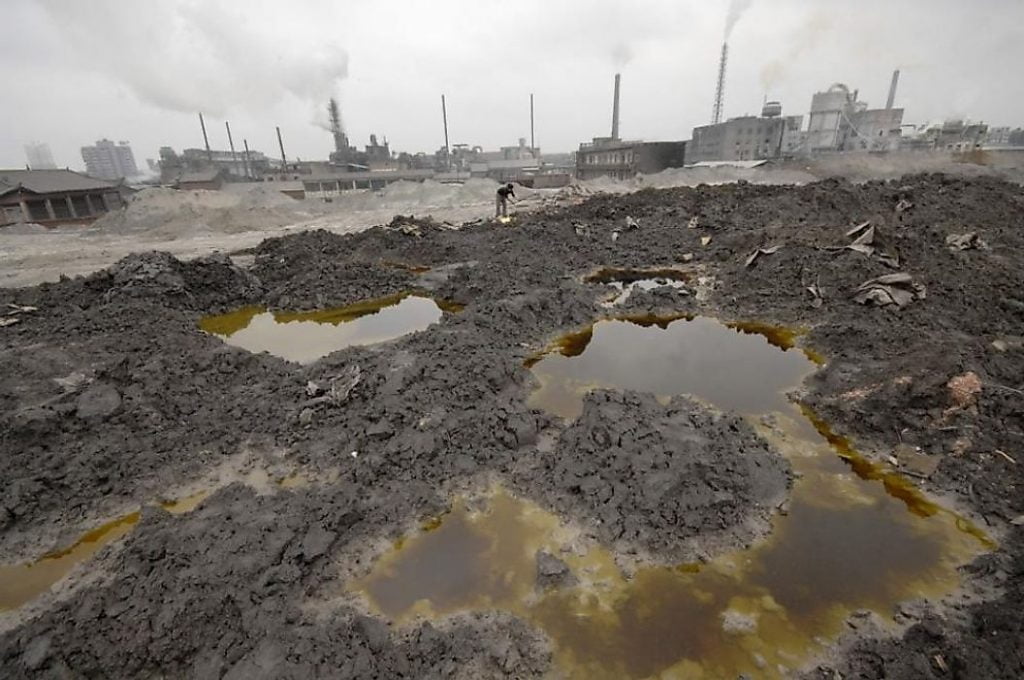
▶ Copper (Cu):
Potential sources: mining, foundry activities; construction activities.
▶ Zinc (Zn):
Potential sources: mining; foundry activities; construction activities.
▶ Nickel (Ni):
Potential sources: mining; foundry activities; construction activities.
▶ PAHs (polyaromatic hydrocarbons):
Potential sources include coal combustion, automotive emissions, accumulation in plants and vegetables growing on polluted soils, cigarette smoke, wildfires, agricultural burning, wood combustion, and construction.
▶ Herbicides/Insecticides:
Potential sources: agricultural activities; gardening.
When did Soil Pollution start?
Although natural soil contamination has always existed (the greatest example being the passage of saline water into coastal soils), soil contamination is mostly linked to human activity.
▶ This can be traced back to the growth of industries and urban areas commencing with the Industrial Revolution in the late eighteenth century, and subsequently, with the use of pesticides and, later, with the use of pesticides and to improve crop output, herbicides are used on agricultural land.
▶ In many developed countries, including the United States, the end of World War II (1939–1945) was a moment of immense economic success and industrial and agricultural advancement.
▶ Chemicals were used a lot more. On the other hand, environmental regulations were not nearly as stringent as they had been in 2008. This combination resulted in the release of environmentally hazardous and slow-degrading chemicals, which was not widely recognized at the time.
▶ With the release of Silent Spring in 1962, a watershed moment occurred. Rachel Carson (1907–1964), the book’s author, warned of the dangers of broad and extensive use of the insecticide DDT on the natural environment and humans, despite the fact that little was understood about DDT’s interactions with living beings at the time.
The outcry following the book’s publication spurred efforts to understand and deal with environmental contamination including that of soil.
▶ One of the most well-known cases of soil contamination in American history is the Love Canal. The region was named after William Love, who was the first to develop the land.
What causes Soil Pollution?
There is a variety of naturally occurring chemicals in all soils, whether they are polluted or not (contaminants).
▶ Metals, inorganic ions, and salts (such as phosphates, carbonates, sulphates, and nitrates), and a variety of organic molecules are all pollutant types (such as lipids, proteins, DNA, fatty acids, hydrocarbons, PAHs, alcohols, etc.).
▶ The majority of these compounds are produced by soil microbial activity and organism decomposition (e.g., plants and animals).
▶ Various substances also enter the soil through the environment, such as precipitation water, as well as from surface water bodies and shallow groundwater moving through the soil, as well as via wind activity or other sorts of soil disturbances.
▶ Pollution occurs when the concentrations of soil contaminants surpass natural levels (what is naturally found in distinct soils).
Anthropogenic (man-made) and natural causes are the two main sources of soil pollution.
◆◆ Natural Causes:
Toxic substances can build up in the soil as a result of natural processes. This form of contamination has only been documented in a few instances, such as the deposition of greater amounts of perchlorate in soil from Chile’s Atacama Desert, which is completely due to natural processes in arid areas.
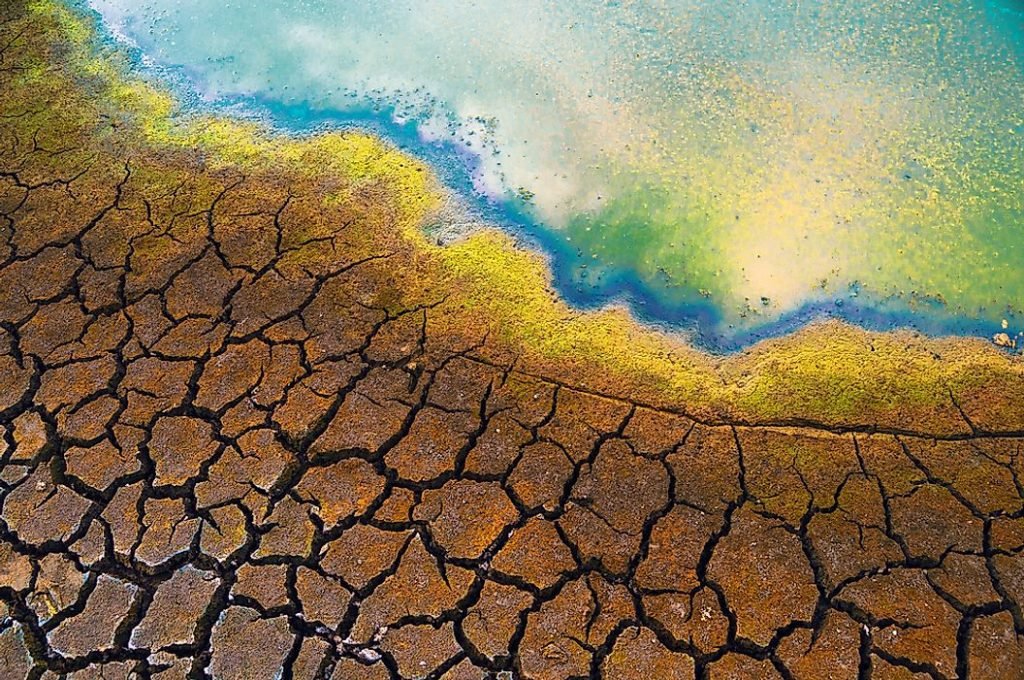
◆◆ Man-made Causes:
Man-made contaminants, which include a wide spectrum of organic and inorganic poisons and chemicals, are the most common sources of soil pollution. They have the potential to pollute the soil on their own or in combination with other natural pollutants.
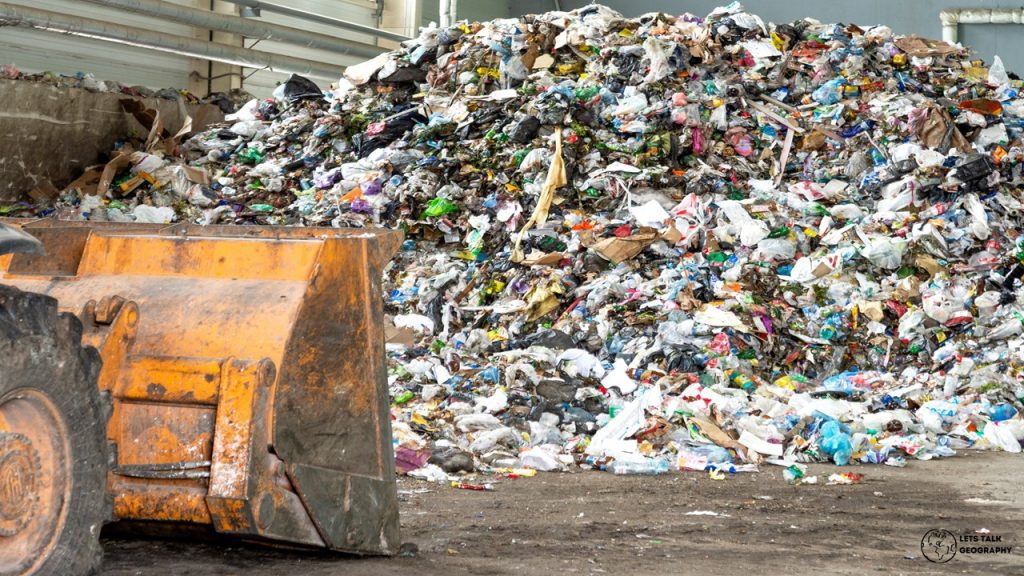
Improper waste disposal from industrial or urban sources, industrial activities, and agricultural herbicides are among the most common sources of man-made soil pollution.
How can Soil Pollution be Prevented?
▶ One of the most well-known cases of soil contamination in American history is the Love Canal. The region was named after William Love, who was the first to develop the land.
◉ To effectively control and prevent soil erosion, every stakeholder must understand the baseline of soil environment quality, which can be accomplished through soil pollution sensitizations and surveys.
◉ To achieve consistent results, the technical requirements for the survey, including the frequency with which it should be conducted, should be determined.
▶ Another option is to construct soil environmental quality monitoring networks to ensure more frequent monitoring.
▶ To ensure a broader and dynamic data update, it is also required to increase the administration of soil environmental information.
◉ Strengthening data sharing and establishing a sharing pattern would aid in ensuring quick responses when the need arises.
◉ Develop the required legislation to combat soil pollution.
◉ Despite the fact that attempts are being made to manage soil pollution, the process should be quickened by developing the required legislation.
▶ Existing registrations in areas such as urban and rural planning, agricultural practices, and land management should be changed and updated to reflect current soil pollution control and prevention techniques.
▶ In the prevention and control of soil pollution, inefficient land use is a major concern.
◉ Agricultural land pollution usually results in the loss of organic matter, topsoil, and nutrients, as well as the soil’s ability to retain water, resulting in a loss of soil fertility.
◉ Mechanical and biological control techniques are ideal soil conservation approaches in agricultural land management.
◉ Forestry and crop-related soil management are included in the biological technique.
◉ Crop rotation, strip cropping, planting along contours, protection belts, crop residues, and the use of organic composts are some of the crop-related management strategies.
◉ Forests are also beneficial in reducing soil erosion.
▶ Before being discharged into the environment, biodegradable waste should be broken down in a controlled atmosphere. The appropriate treatment of sewage sludge is an excellent example.
◉ The waste materials should also be classified according to their contamination level.
▶ Because it is less expensive to prevent soil contamination than it is to maintain poisoned soil, the right goal should be to safeguard new soil.
◉ Before any new land is used, it should be thoroughly researched to ensure that it is fit for the intended purpose.
▶ Controlling mining and industrial emissions is the most effective strategy to reduce soil contamination. In addition to reducing pollution, everyday environmental monitoring should be improved.
▶ The government should make an effort to improve soil quality by treating and remediating contaminants.
▶ To achieve long-term sustainability in the prevention and management of soil pollution, technological research on soil pollution prevention and control should be strengthened.
What is the future effect of Soil Pollution?
What is the future effect of Soil Pollution?
◆◆ To achieve long-term sustainability in the prevention and management of soil pollution, technological research on soil pollution prevention and control should be strengthened.
◆◆ It also contaminates water held in the soil and groundwater, resulting in nutrient imbalances in the soil.
◆◆ Soil pollution is harmful to the ecosystem and has ramifications for all forms of life that come into contact with it.
◆◆ Pollutants in the soil, groundwater, and food supply can cause a wide range of diseases and deaths in humans, ranging from short-term acute impacts like intoxication or diarrhea to long-term chronic consequences like cancer.
◆◆ Soil pollution has enormous economic implications, in addition to its environmental impact, because it reduces crop yields and quality. Preventing soil pollution should be a major priority for everyone on the planet.
◆◆ Humans can be harmed by soil pollution by inhaling gases produced from rising soils, or by inhaling stuff that has been disturbed and carried by the wind as a result of numerous human activities on the ground.
◆◆ Soil pollution can cause a wide range of health issues, including headaches, nausea, exhaustion, skin rashes, and eye irritation, as well as more serious disorders such as neuromuscular blockage, kidney and liver damage

